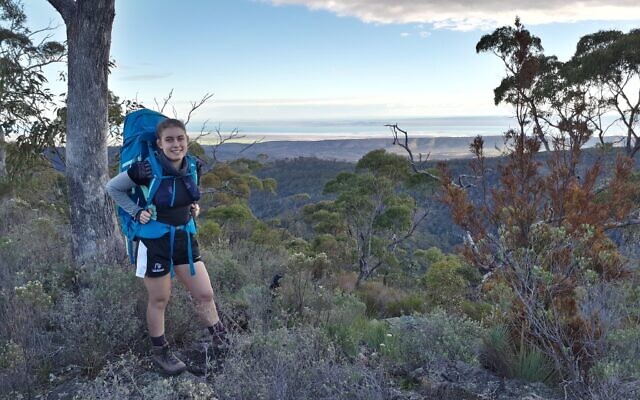A team of Australian Earth scientists have completed the first comprehensive strontium isotope mapping of Israel. Strontium isotopes, found in most soil, eventually make their way to human and animal bones and teeth, where they serve as a “fingerprint” of the locations in which they resided.
The map allows archaeologists to chart migration patterns of ancient humans and animals through a comparison between strontium isotope levels found in bone and tooth remains found in excavations and the new database of securely pinpointed sites throughout Israel.
“The application of the study is for archaeologists to understand how people move through landscapes,” said Dr. Rachel Rudd, a co-author of the new study, “Bioavailable Soil and Rock Strontium Isotope Data from Israel.”
Rudd told The Times of Israel that just as archaeologists in Israel routinely test for radiocarbon-14 when dating artifacts, they should now also test for strontium isotopes “for a further layer of information; another piece of the puzzle.”
Using the new map, archaeologists can “find the overlap between isotopes from teeth or bones and the landscape, and can work out from where they may have come,” she said.
The research is part of the the Isotopic Reconstruction of Human Migration database out of Australian National University. The Israeli data was harvested in 2008 by a crew including lead author Prof. Ian Moffet of Flinders University and processed by a large interdisciplinary team in Australia, including Rudd, also of Flinders.
All living organisms carry varying levels of strontium, which is found in soil and water with the breakdown of rocks. Since the element makes its way into both flora and fauna, the metal is absorbed into animals and humans through their diet. Scientists are able to discern the differing levels of the isotopes in bones and teeth, which reflect the regions in which the individuals lived.
The technology is already being used in archaeological excavations in Israel, including the Tell es-Safi/Gath Archaeological Project, headed by Bar-Ilan University Prof. Aren Maeir. He told The Times of Israel that Flinders University’s Moffet and his team have a paper analyzing strontium from human teeth in the upcoming second volume of Tell es-Safi excavation reports.
“This is a great method for provenancing animals, humans, and at times plants, since each region has a typical strontium fingerprint in the local geology, which effects the water/plants, which effects the uptake of strontium (Sr) in organisms. You can then know where an animal/person was at different times of its life, based on Sr on different developments stages of teeth,” wrote Maeir in an email.

Prof. Aren Maeir in the lab of the Tell es-Safi/Gath Archaeological Project at Bar Ilan University (courtesy)
According to the Center for Applied Isotope Studies out of the University of Georgia, which was not involved in the new study, “Archeologists use the isotope ratios of strontium to determine residential origins and migration patterns of ancestral humans.”
“Since Sr isotope ratios in soils, rocks, and waters vary widely in nature, and are not appreciatively fractionated by biologic processes, the assumption is that the isotope values for strontium in bone and tooth enamel will reflect those in the portion of the biosphere in which an individual lived. Thus, strontium isotope composition provides links to the land where food was grown or grazed,” explains the website.
Strontium isotope analysis also has practical modern applications and is used in forensics analysis of human tissue to discover the John or Jane Doe’s region of origin, travel history, and even clues into diet.

Illustrative: A skeleton of a donkey dating to the Early Bronze Age III (approximately 2700 BCE) found at the excavations of the biblical city Gath. (Tell es-Safi/Gath Archaeological Project)
The new Israel study is based on 60 modern soil samples and 48 rock samples, mostly from road cutting, which were analyzed in Australia and mapped, said Rudd. When the findings of the strontium ratios are compared to securely dated bones taken from archaeological sites, archaeologists can gain a new sense of where these people or animals lived.
Rudd calls the mapping and the data base “absolutely crucial data for working out how far early humans and animals were moving around the landscape in a place that has many of the most important archaeological sites for understanding human evolution.
“Israel has many archaeological sites of great importance for understanding human evolution, and the results of this study will assist in furthering this research,” said Rudd in the Flinders’ press release.
 RSS Feed
RSS Feed















 August 19th, 2020
August 19th, 2020  Awake Goy
Awake Goy 
 Posted in
Posted in  Tags:
Tags: 













